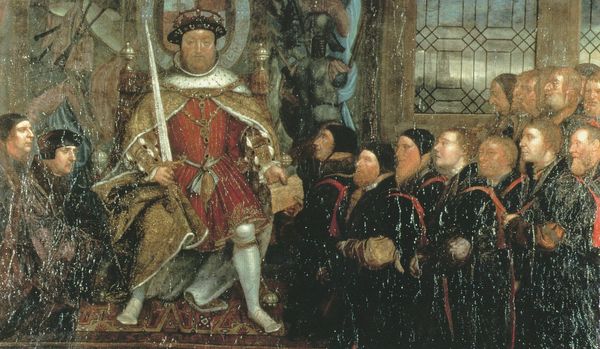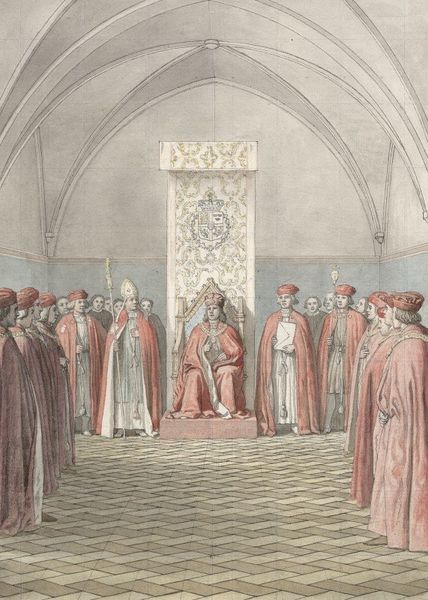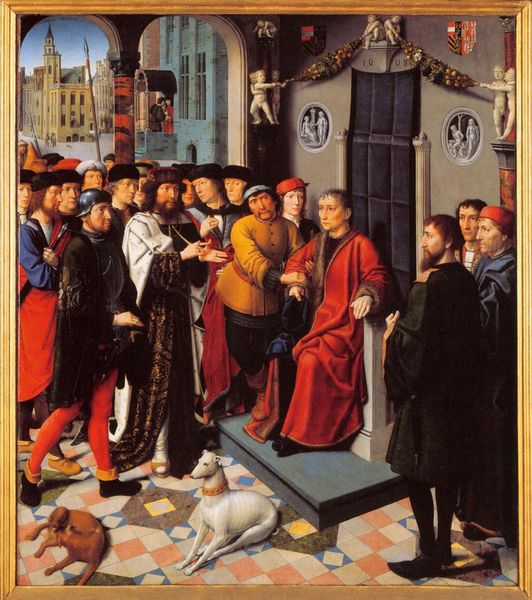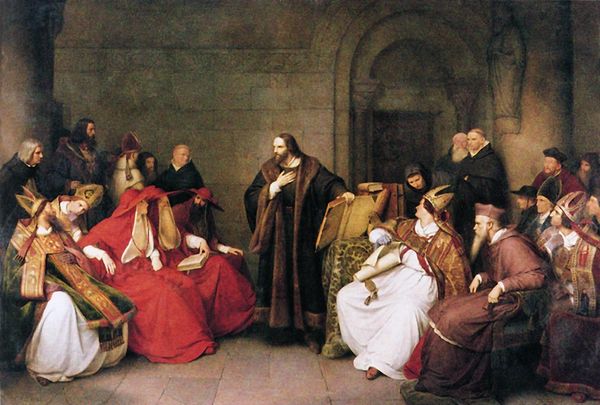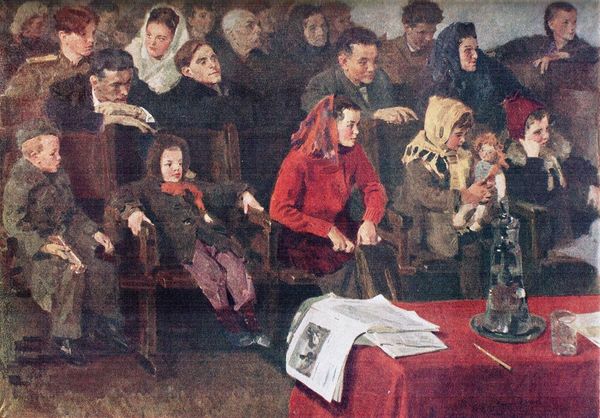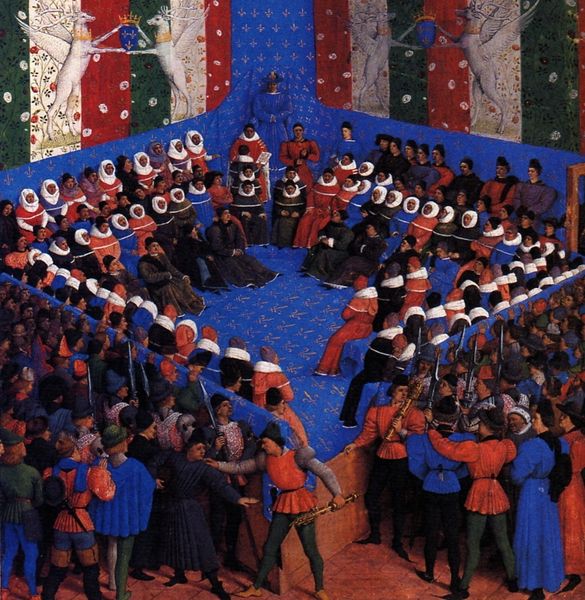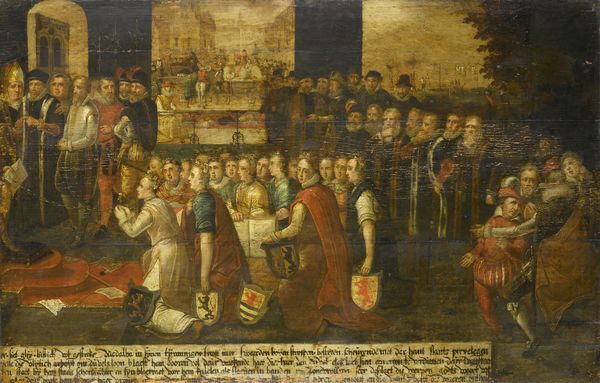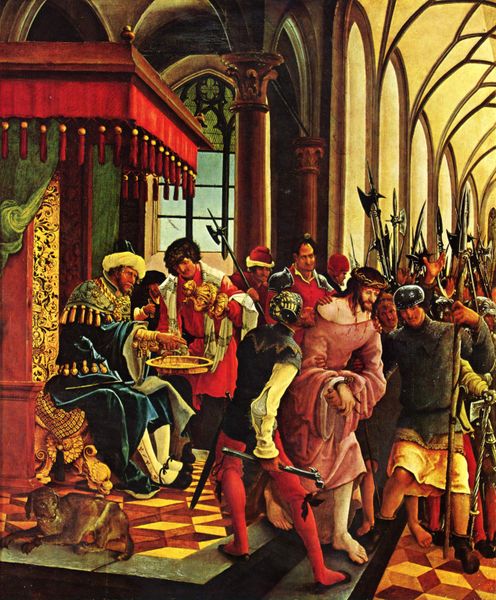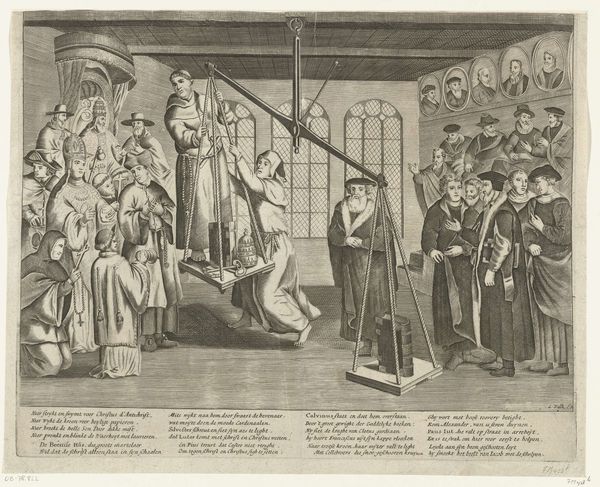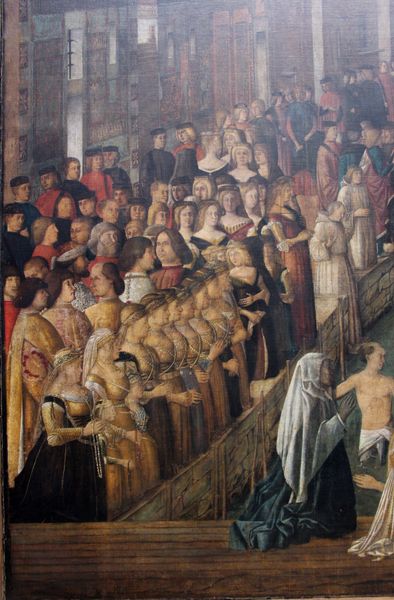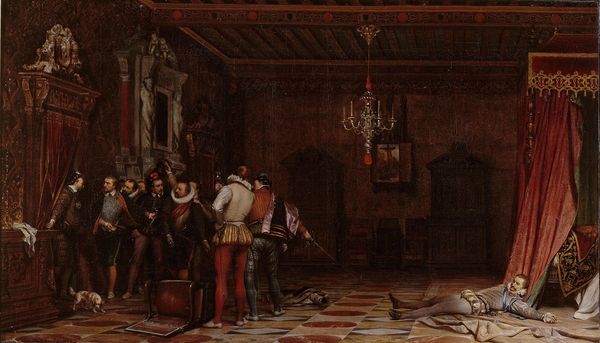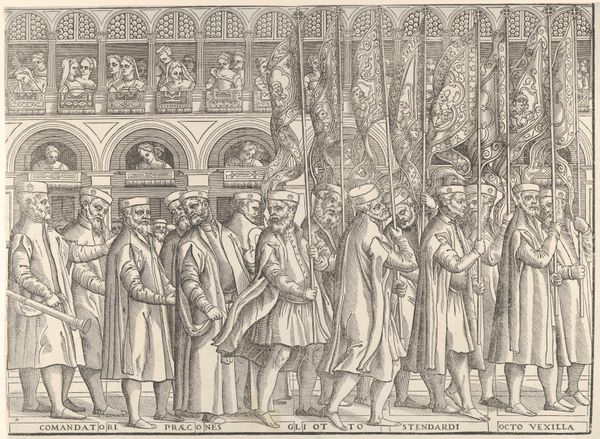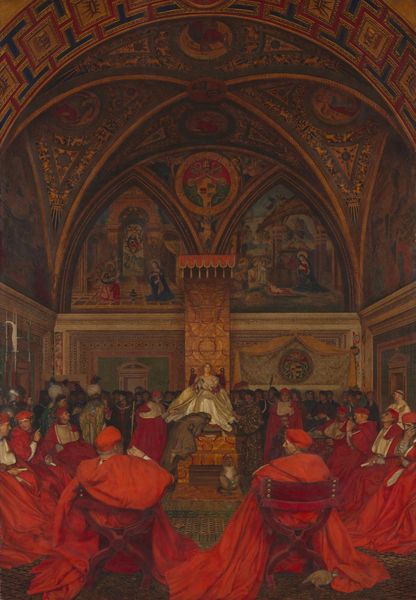
panel, painting, oil-paint
#
portrait
#
panel
#
narrative-art
#
painting
#
oil-paint
#
figuration
#
group-portraits
#
history-painting
#
italian-renaissance
Copyright: Public domain
Curator: Let's turn our attention to this artwork titled "The High Council," painted around 1525 by Mabuse. What strikes you initially about it? Editor: The sheer number of figures and the claustrophobic composition—a sea of red robes that creates a visually arresting yet slightly unsettling atmosphere. Curator: Indeed, that pervasive use of red immediately catches the eye. The artist clearly intends it to hold significant weight—evoking ideas of power, authority, perhaps even a warning. Red historically signified courage, nobility, and in some contexts, martyrdom, depending on its application. How might it resonate in this context? Editor: Given the nature of the high council, I think the association with power and nobility is the most pertinent. The carefully structured arrangement and formal poses of the men also amplify a sense of rigidity. The chessboard flooring emphasizes an idea of rationality. Curator: Absolutely, that floor acts as a stage upon which deliberations unfold, an ordered plane reflecting controlled conflict. It emphasizes the Renaissance ideal of order—while the expressions betray something of the tension and human element bubbling underneath. Note too the figures looking upwards, a composition which prompts us to adopt a lower vantage, thus imbuing the council with greater authority. Editor: It also has an interesting architectural effect. With that vanishing point quite high and central in the picture plane, it tends to flatten the pictorial space. Look at the materiality of the oil paint on the wooden panel too; it lacks the luminosity you sometimes see in comparable Italian works of the period. Curator: That subdued surface adds to the gravitas, lending a seriousness appropriate to its subject. Mabuse successfully communicates through visual symbolism the importance of law and judgement while also suggesting, in subtle ways, a level of anxiety that lies beneath. Editor: It truly is an expertly crafted tableau, laden with implicit tensions rendered tangible through colour, form and design. The flattening perspective offers a modern sensibility while portraying such tradition. Curator: Agreed. Understanding how those visual signifiers operate grants us access to the cultural mindset of that era, and highlights the way artists navigated the nuances of power.
Comments
No comments
Be the first to comment and join the conversation on the ultimate creative platform.

